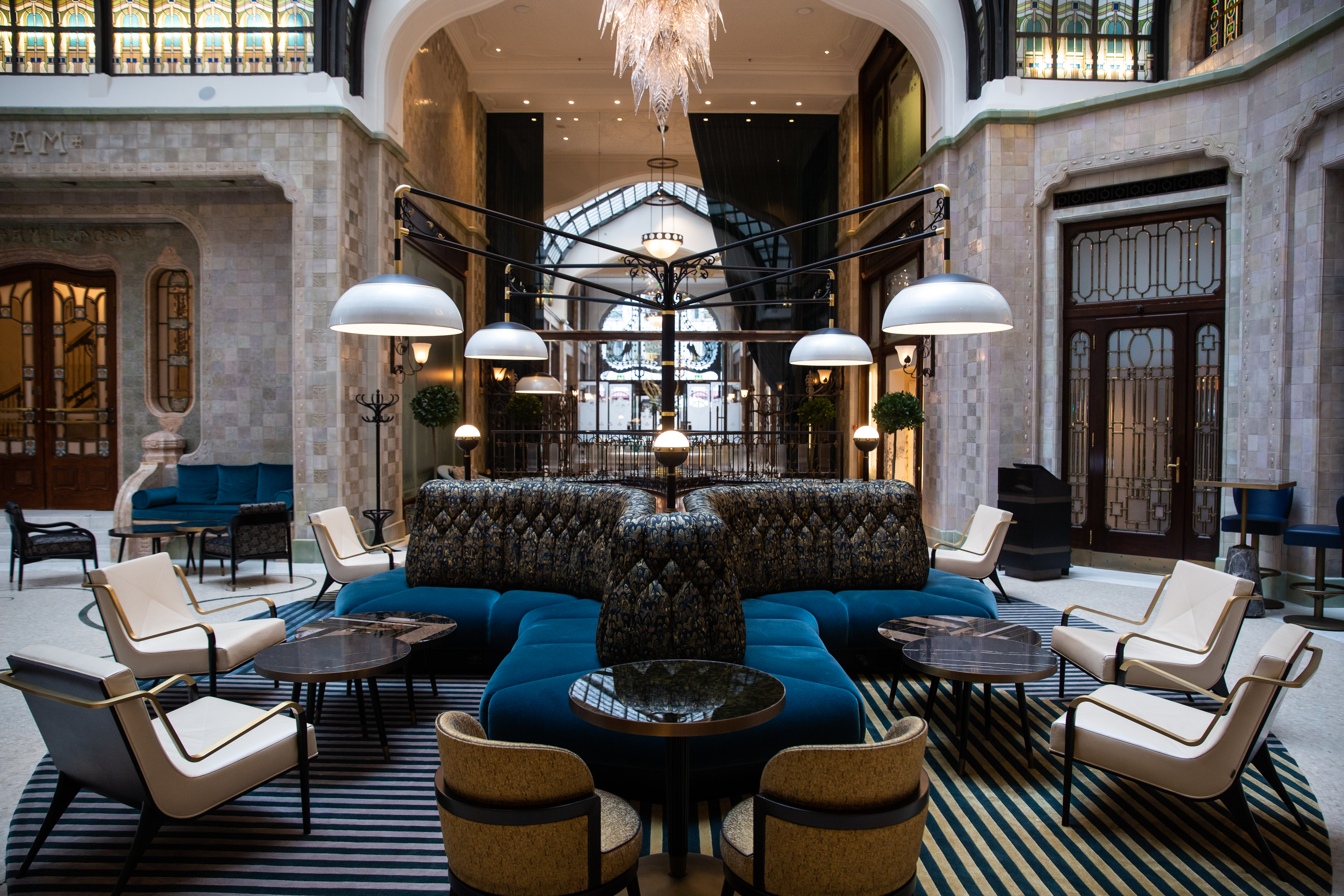The Gresham Palace is one of the most striking Art-Nouveau buildings in Budapest and, together with several other buildings along this elegant stretch of the Danube, forms part of a World Heritage Site.
Guest experience
The We Love Budapest Guest
Experience series showcases hotels in Budapest that our staff visit
for free, on the proviso that we also have the opportunity to share any
negative experiences in our subsequent article. Hotel
management cannot vet the material before it is published.
Designed by Zsigmond Quittner and the Vágó brothers, the Gresham catches your eye from the opposite bank or when crossing the Chain Bridge. Its lights beckon you over, enticing you to imagine the luxury you might indulge in should you ever get the chance to stay there one day. Today was the day.
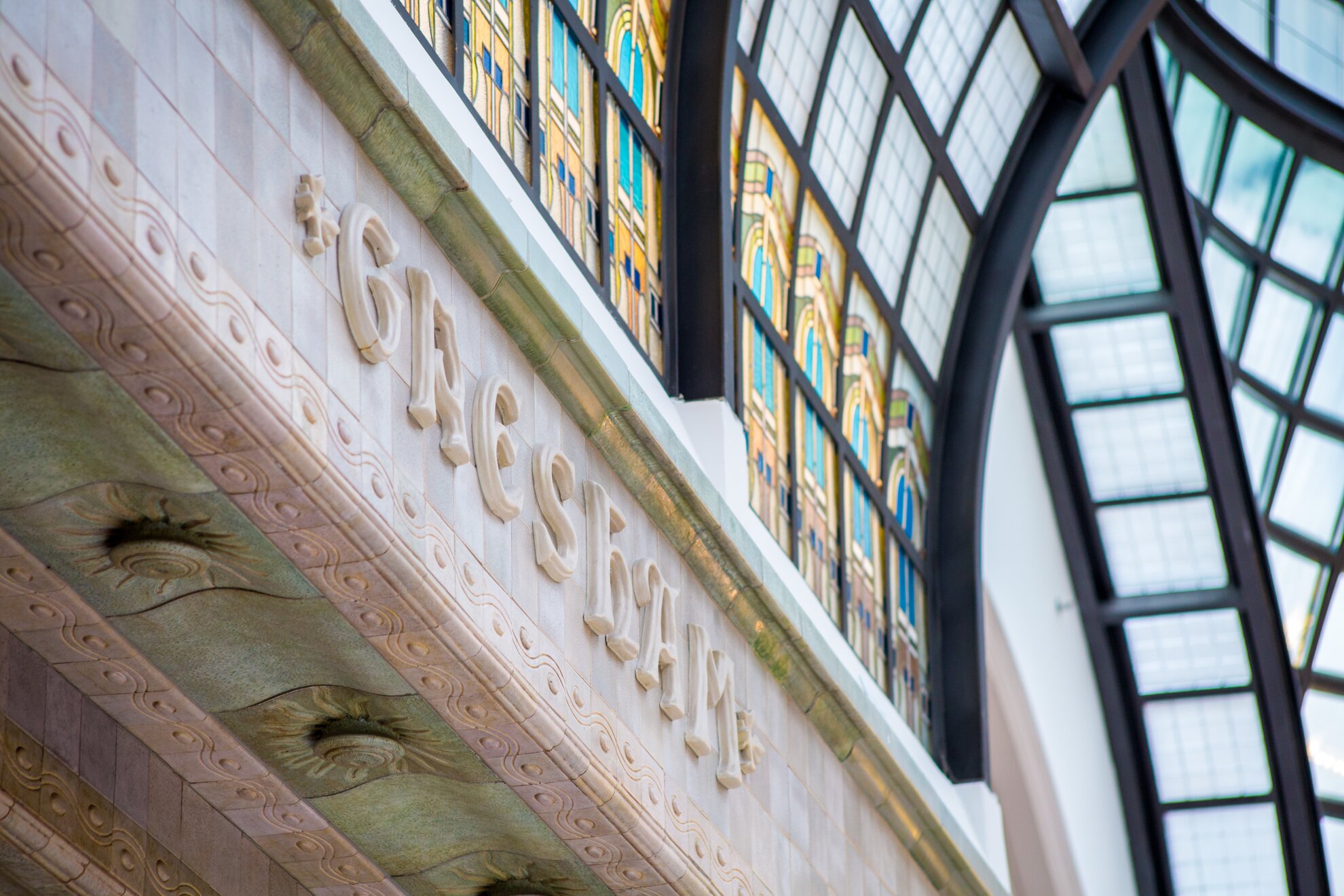
We arrived at the Four Seasons on a rainy weekday and, since we are talking about a five-star hotel, we were quickly greeted by a doorman and a bellhop at the main entrance, just like a scene from The Grand Budapest Hotel.
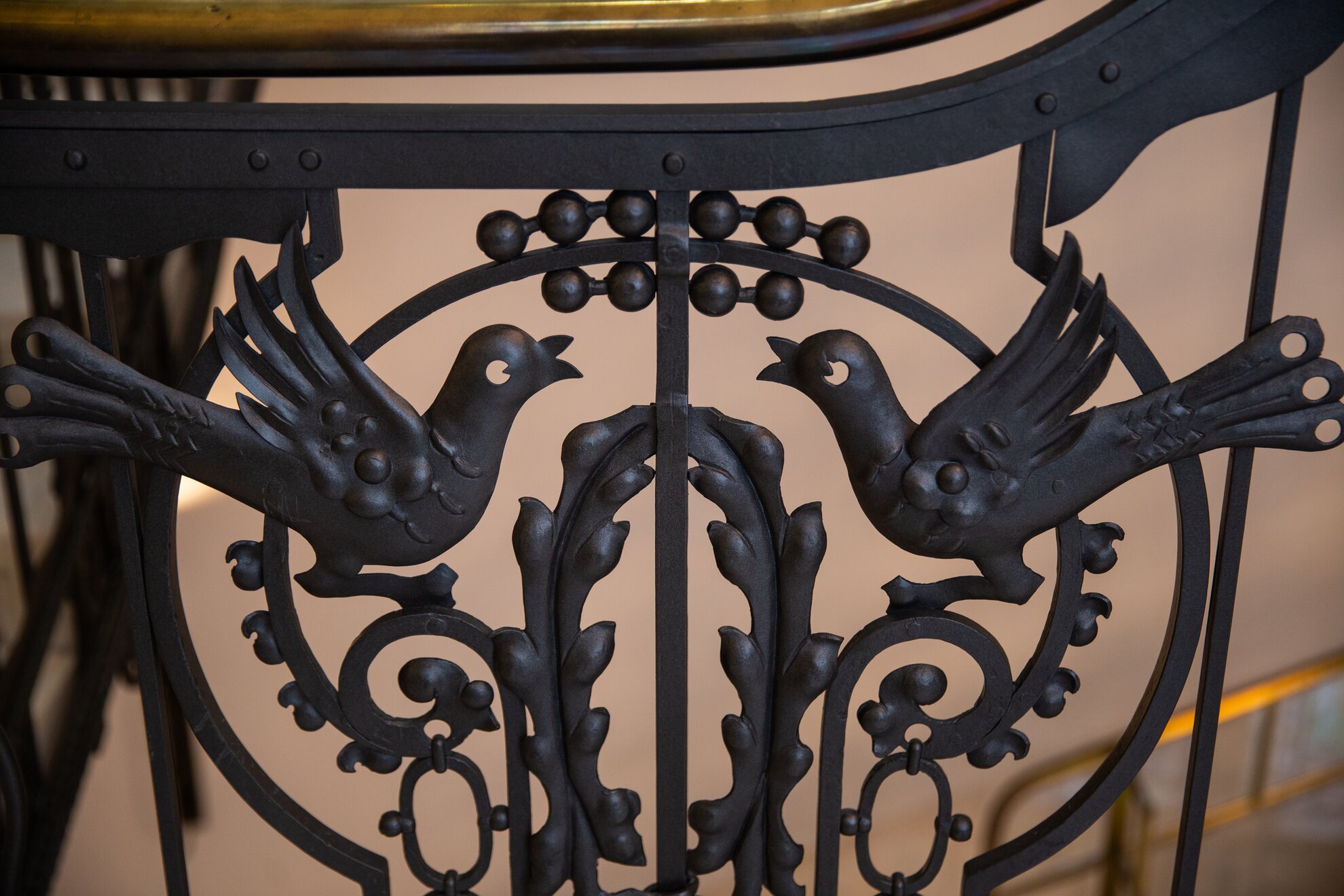
As we crossed the wrought-iron gates, decorated with huge signature peacocks, we glided back to the bohemian glamour of Budapest between the wars. This impression was helped along by the mosaic floor, the central dome, an exact copy of the original, and the sparkling cocktail bar opened in 2020, itself inspired by the Gresham’s heritage.
From company offices to luxury hotel
When the building was converted into a 179-room
luxury hotel in 2004, everything was restored to its original Art-Nouveau style.
Equally key was the notion of reviving the atmosphere when a lively café and louche
cabaret operated here in those glory days.
Built in 1906 as the headquarters of the London-based Gresham Life Assurance Society, the palace was already the non plus ultra of its day, with central heating and a central vacuum cleaning, then considered the height of sophistication.
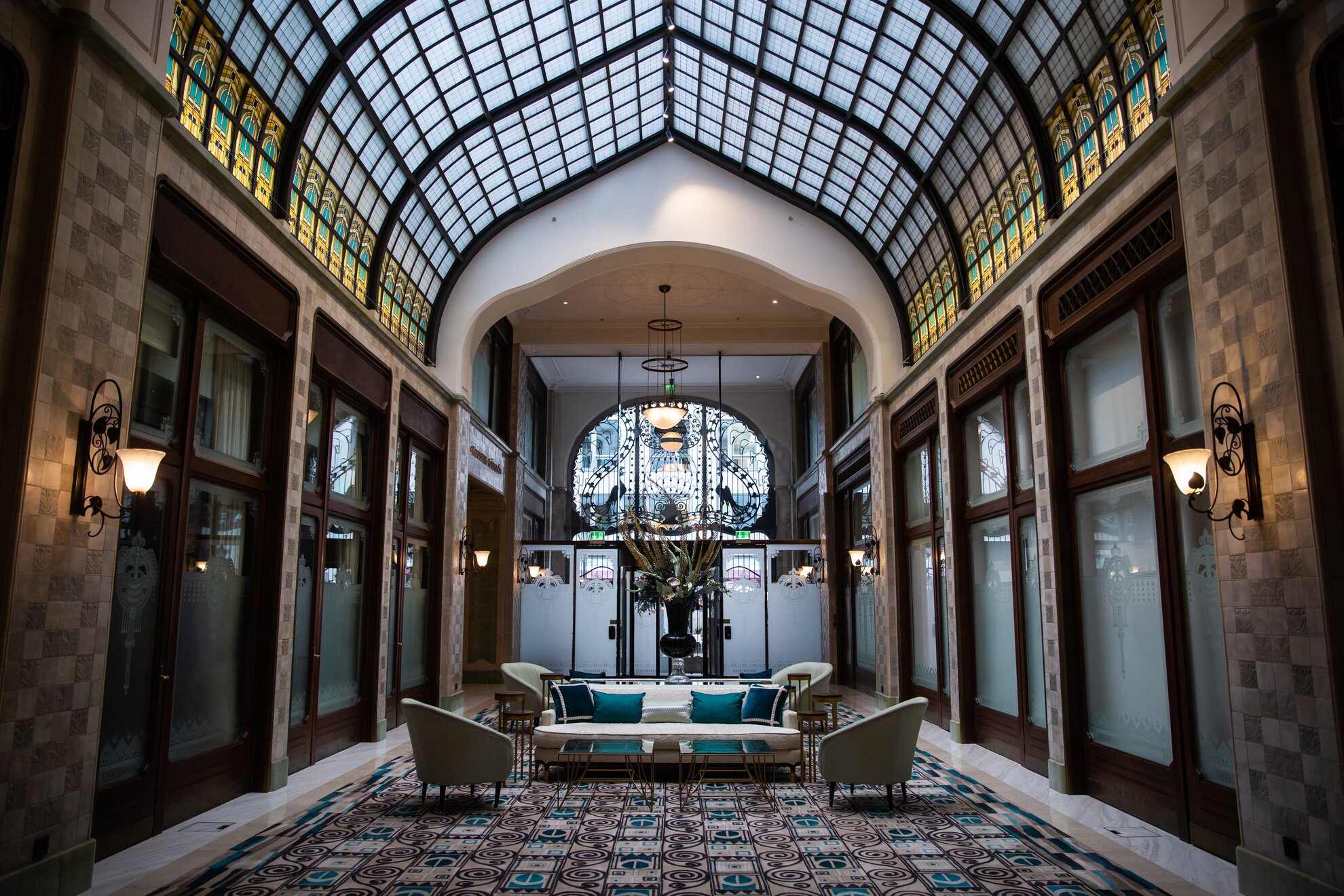
As designers were given carte blanche, the most famous artists of the time worked on the building, the façade decorations were made by Géza Maróti, the wrought-iron gate by Gyula Jungfer, the tiles lining the passage by the famed Zsolnay factory in Pécs, and the stained-glass windows by the renowned Miksa Róth, whose work is integral to many of Budapest’s finest examples of Art Nouveau.
The Gresham offices only occupied part of the building, the rest given over to luxury apartments, with a café and cabaret also added. The building was frequented by the influential artists and figures of the early 1900s, this aspect underscoring its transformation to a luxury hotel nearly a century later. It was by no means easy, however, to revive this elegance, the building battered by war and decades of decay under Socialism.
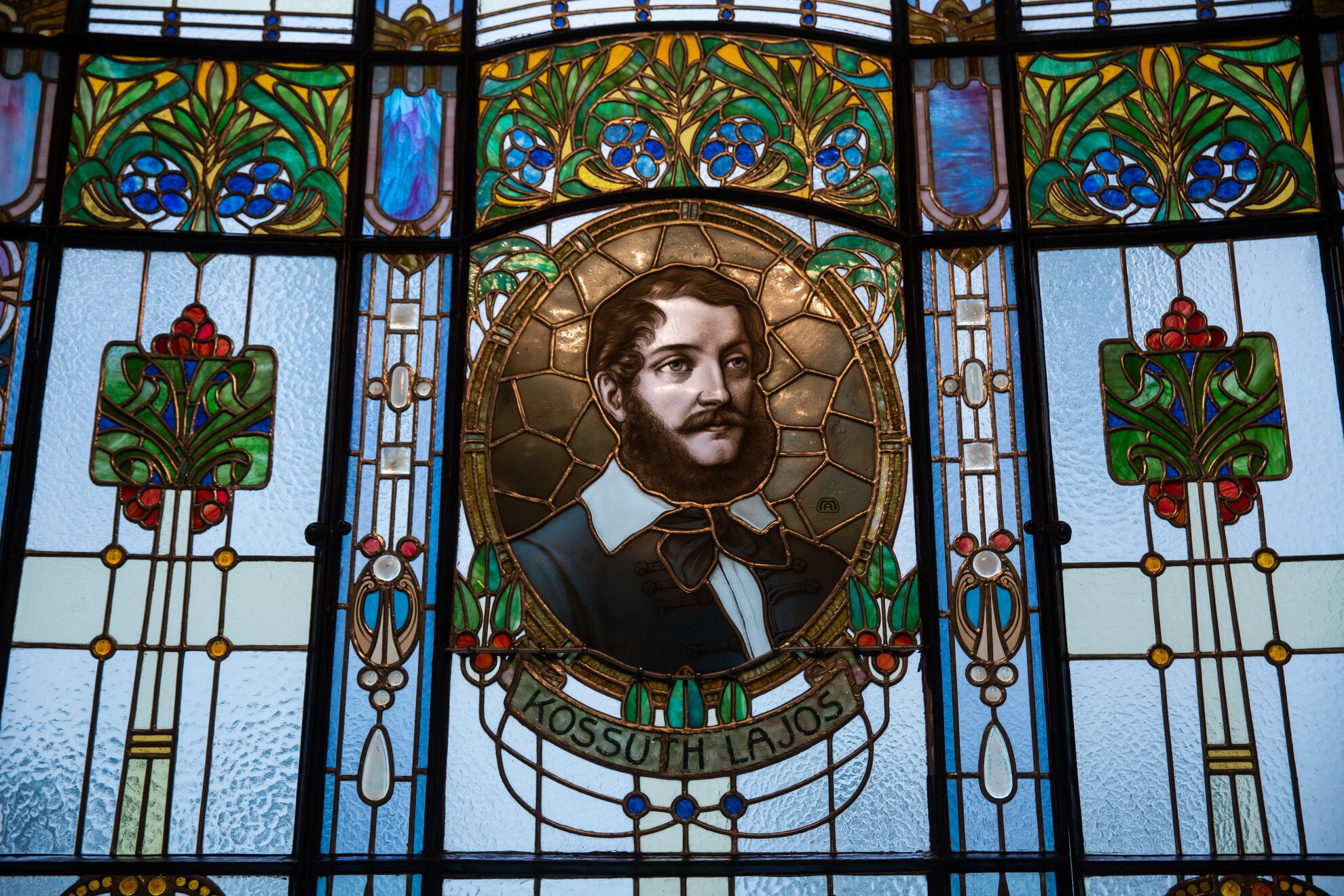
When the Chain Bridge was blown up by retreating German troops in 1944, the Gresham’s glass windows and wrought-iron gates were destroyed and the Zsolnay tiles fell off the walls, some picked up and carried away by passers-by. What we see around the interior today are copies of all original materials and ornaments except for one Miksa Róth window and one of the wrought-iron gates, although it isn't possible to know which is original and which a later imitation.

The guestrooms, too, are aligned as they were in the original building. Ours, a Danube river-view room, overlooked the Chain Bridge and the Castle District, the window frame fashioned in the flowing lines of Art Deco. This is also the door that opens to a step-out balcony, to fresh air and to the sound of Budapest.
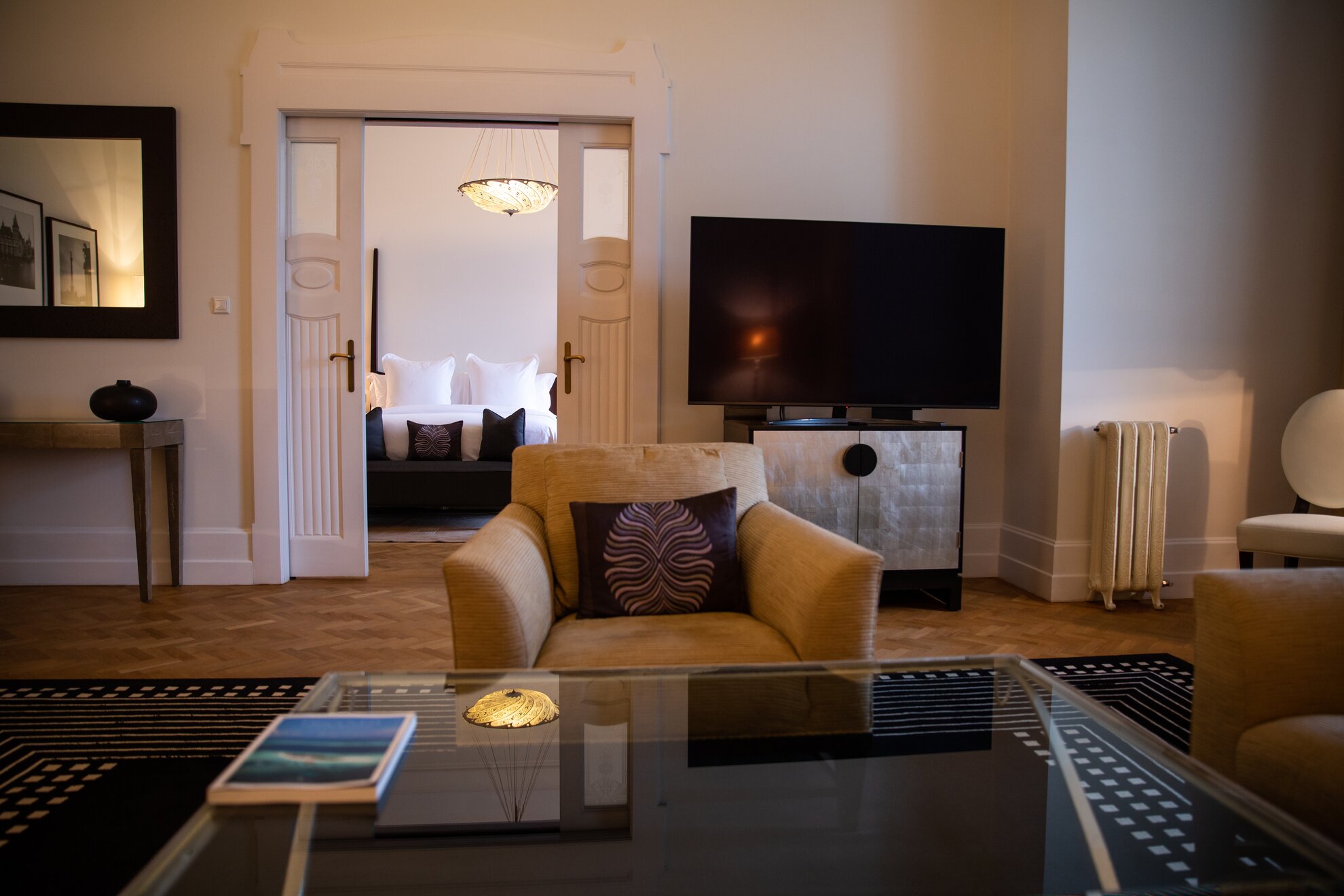
Around the room, plentiful lights, a writing
desk, a swivel chair alongside it, an occasional table beside the comfy armchair
in the corner, and, partly thanks to the natural light flooding in, a sense of
space. This, despite the fact the bed – twin or king-sized, it’s up to you – is
sizeable and bookended by a panoply of plump pillows.
The mattress quickly passes
the 'Ah, perfect!’ test when you first sit on it. Above it, the down duvet will
prove smooth to slide under later, while two thick terry dressing gowns, professionally
folded as only five-star staff know how, have been discreetly placed above welcome
pairs of slippers.
The marble bathroom features a capacious bathtub and a shower festooned with high-class smellies and, that eternal indicator of class, bath salts. Back in the bedroom, we choose our breakfast while we channelsurf and pour a quick coffee from the Nespresso machine. The WiFi is fast, smooth and easy to access.
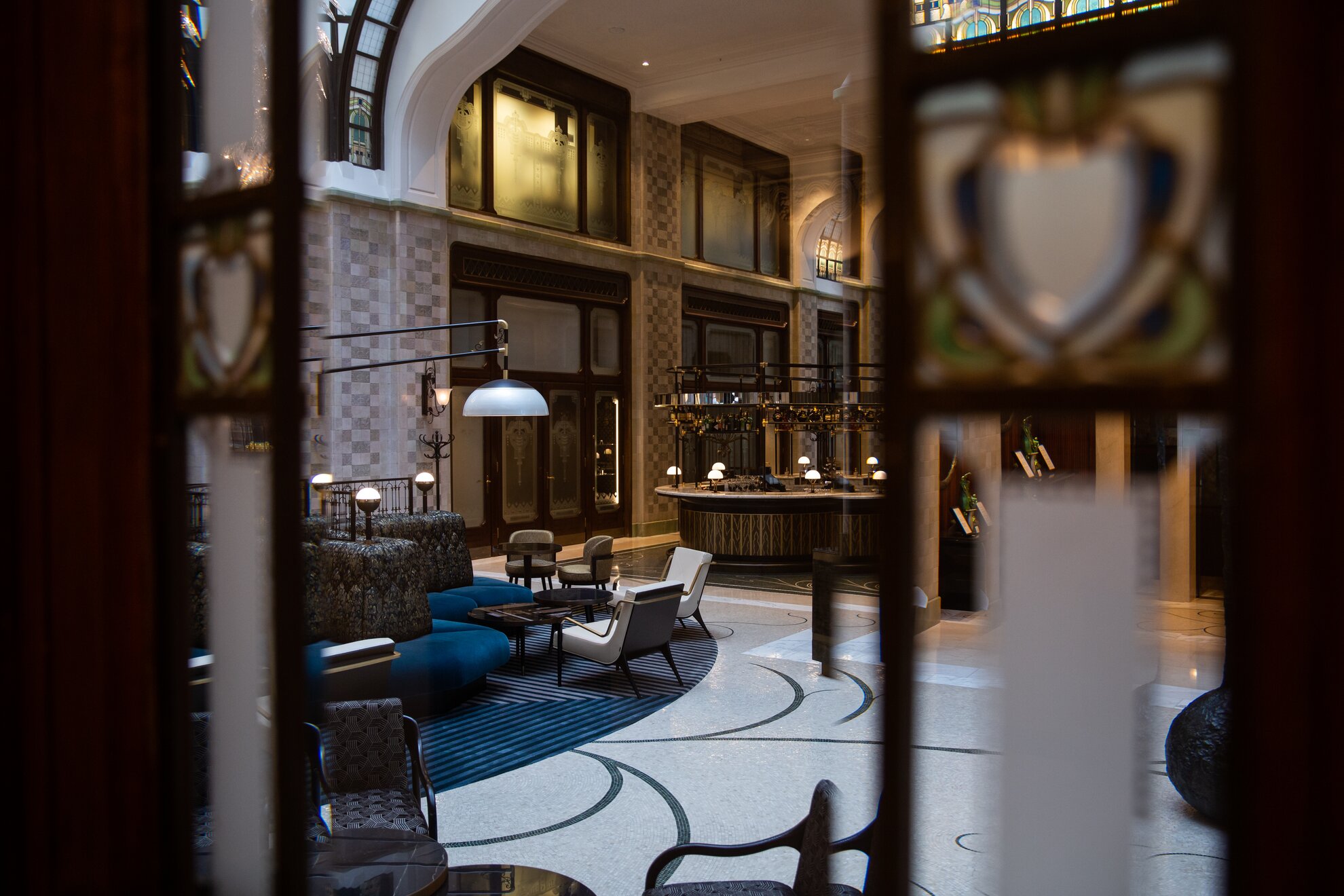
Concierge services are 24/7, no request too onerous. As distinguished visitors, though, we’re given our own tour of the building – the suites were occupied, a nice sign of tourism’s return. Whichever room you choose, you’ll find a complimentary bottle of water next to your freshly made bed, to indicate yet another visit from housekeeping.
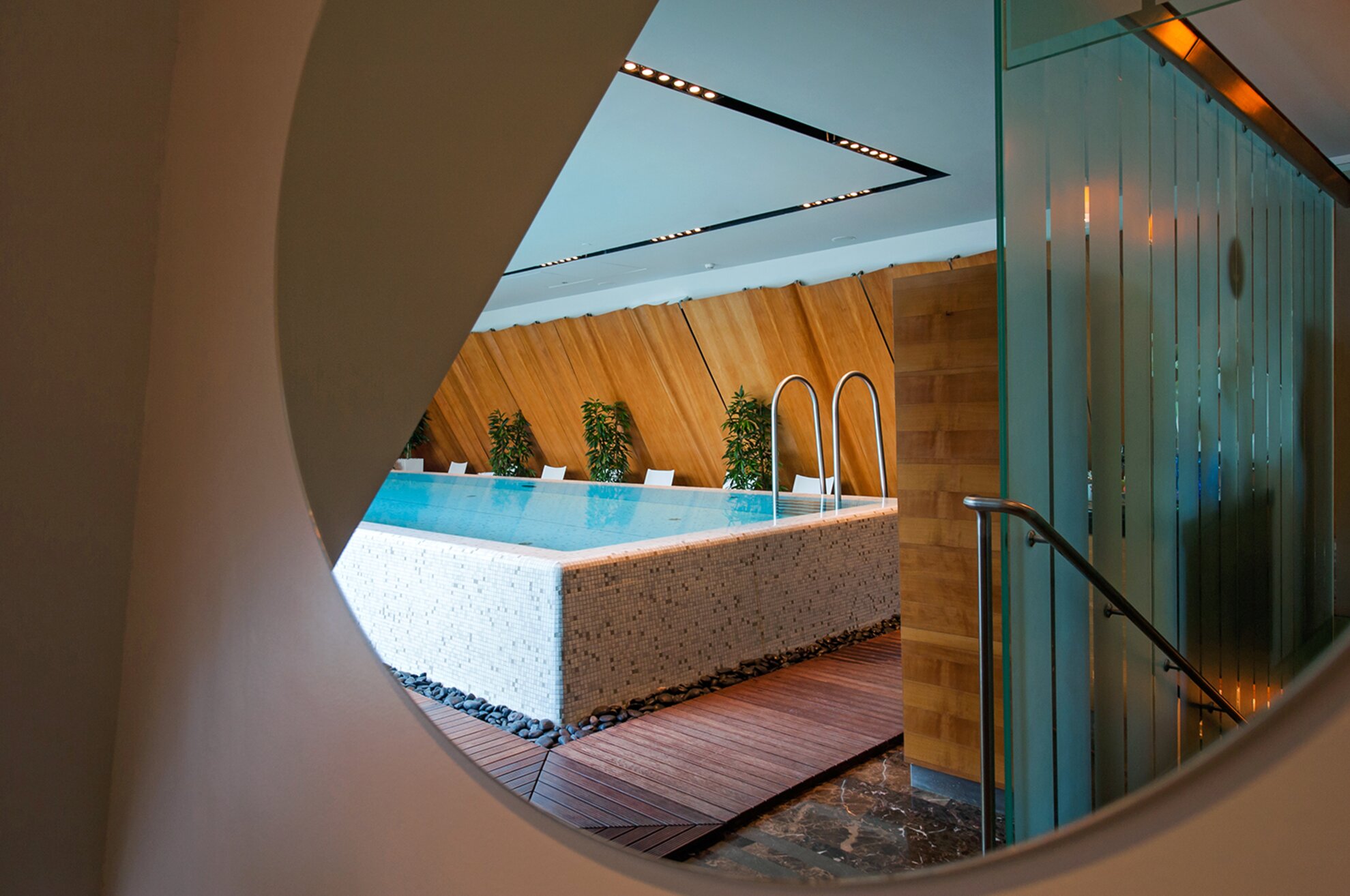
As this is probably a once-in-a-lifetime experience, it seems to churlish to any couch any review with a caveat but, for very understandable reasons, it was a shame the spa wasn’t open. As and when it is, a panoramic cityscape comes with your swim, and massage treatments are delivered with Hungarian moor mud, lavender and grape-seed oil as created by local experts Omorovicza.

As special guests, however, we were treated
to a seven-course meal at the KOLLÁZS – this included signature drinks, the in-house
Múzsa cocktail bar currently being closed – and let Bocuse d’Or chef Árpád
Győrffy pull out all the stops: oysters accompanied by a gin-and-tonic foam,
grilled St James mussels, venison...
The lap of luxury, indeed, but diners,
including non-guests, can still sample something of these delights with the daily
lunch served here between noon and 3pm for 4,300 forints. Currently on the main
menu (5,400-9,900 forints), you can select between spicy octopus & seared
scallops, pan-seared Scottish salmon, and steak frites with prime sirloin.

Post-dinner relaxation can be enjoyed in the adjoining Concierge Library Room, decorated with posters of pre-war vintage, lined with shelves of coffeetable books covering art movements and iconic Budapest, and equipped with an oversized chess set for anyone to play.
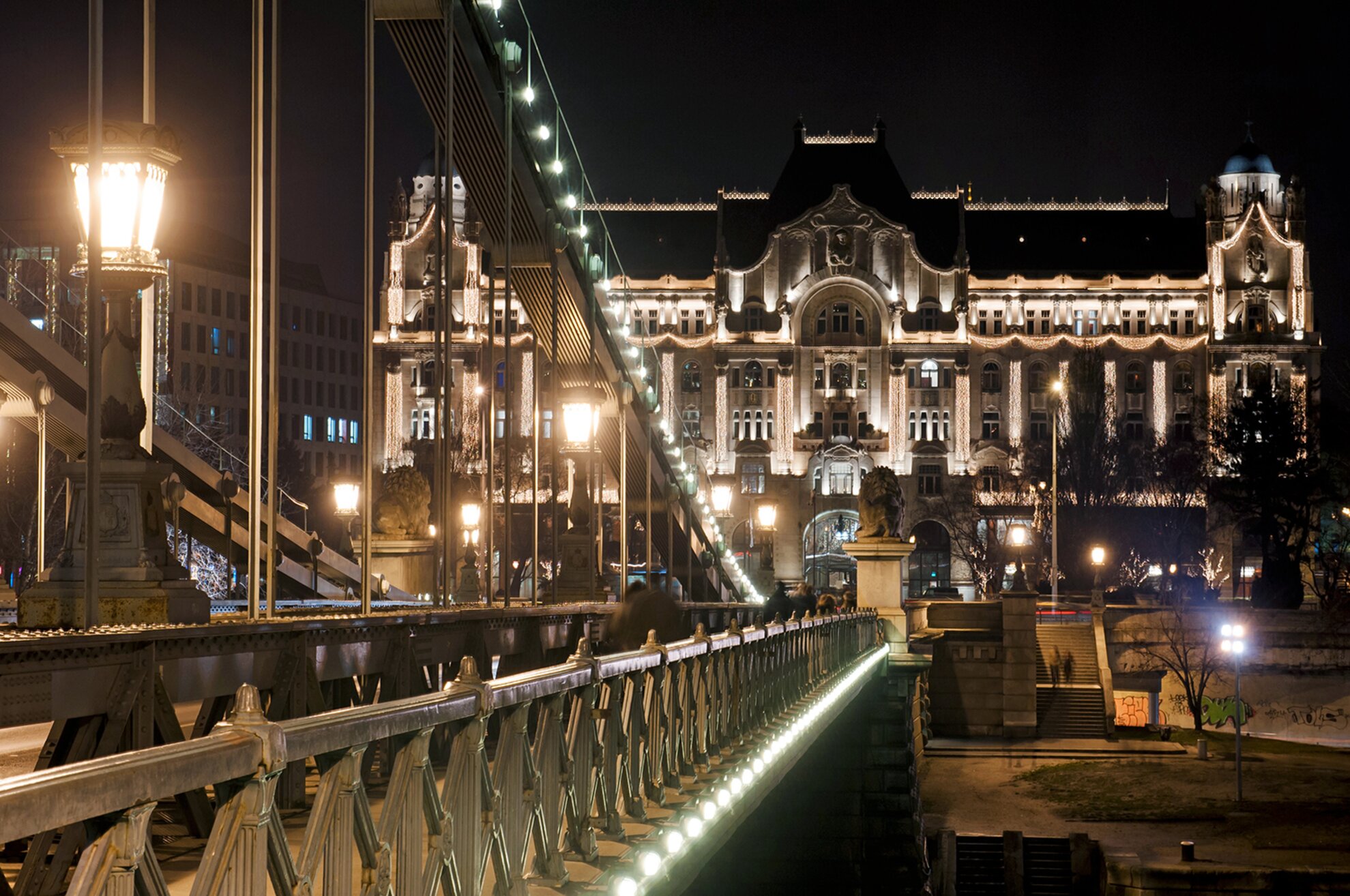
Post-dinner relaxation can best be enjoyed, however, from your window, a view you’ll never tire of, the illuminated silhouette of Chain Bridge backdropped by Buda Castle. Despite the fact that a relatively busy road runs below, and even the bridge is being renovated, soundproofing is first-class, deep sleep the satisfying result.
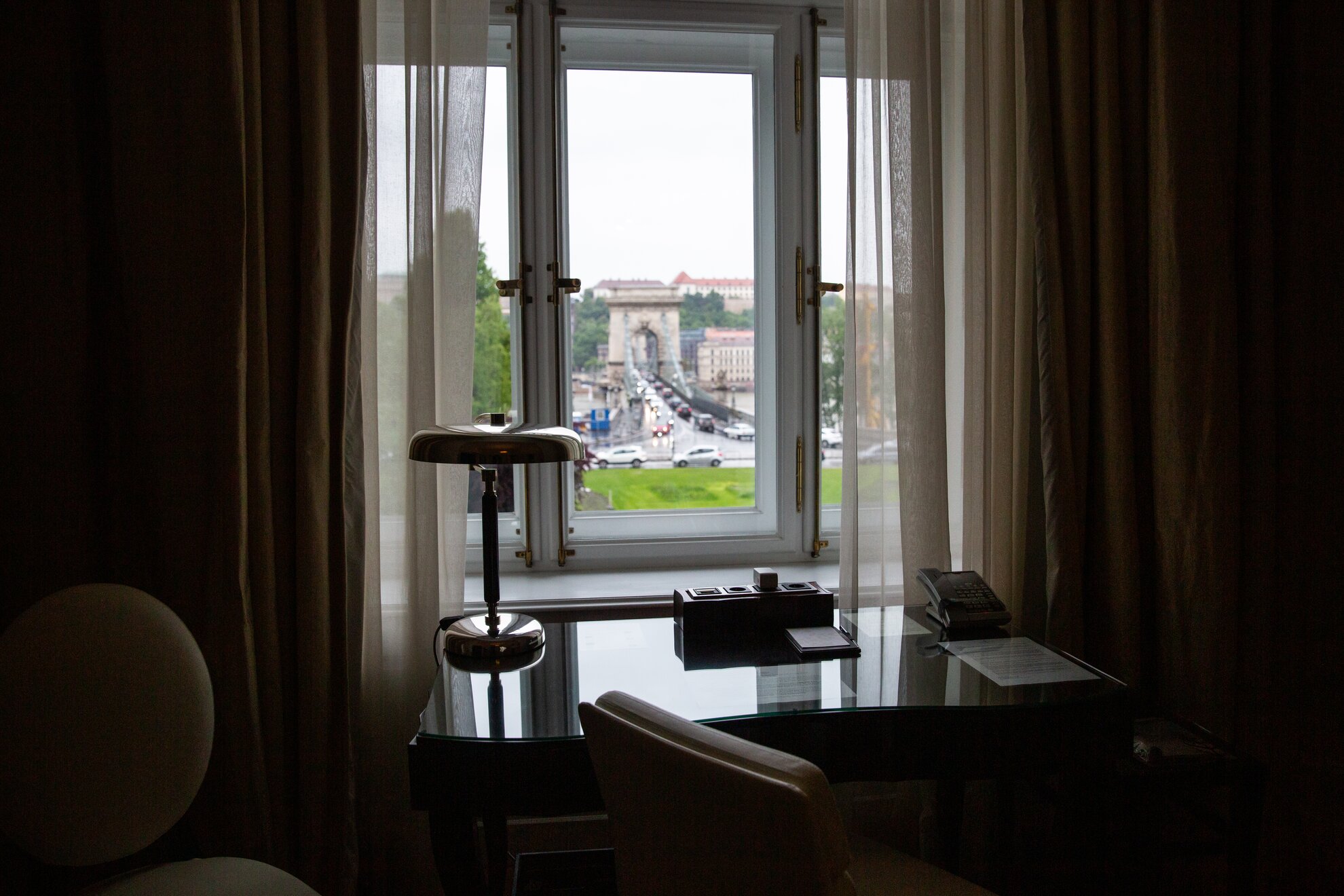
To bookend our stay, we had to sample room service the next morning – it’s 24/7, just so you know – and we enjoyed our breakfast in our bathrobes, gazing at the same stunning panorama of Budapest by day. The first meal of the day ranges from croissants, various jams, fresh orange juice and coffee, to avocado toast and scrambled eggs, to the hotel’s big hitter, Eggs Benedict. Oh, and don’t forget to indicate which complimentary newspaper you'd like beforehand.
Four Seasons Hotel Gresham Palace Budapest
District V. Széchenyi István tér 5-6
